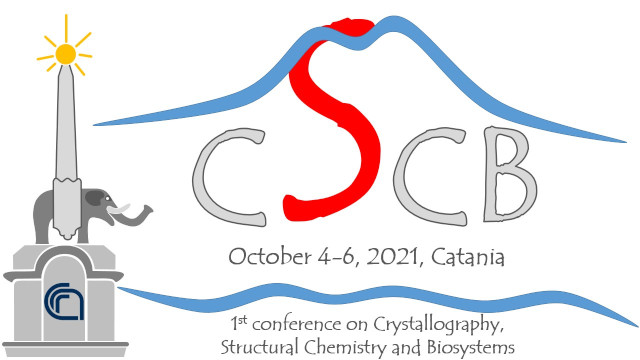Speaker
Description
Biosensors are interesting devices arising from a synergistic combination of well-established scientific knowledge and cutting-edge technologies, including nanotechnology, biotechnology, and materials science. This cross-disciplinary approach actively contributes to the customization of algae-based biosensors with improved analytical performance (e.g. sensitivity, reproducibility, and fast response) in environmental and agrifood applications1-4. The main advantages in using whole algae cells and their sub-components as biorecognition elements relies on their adaptability to diverse environments, easy immobilizations procedures, and sensitivity towards specific target analytes. In addition, algae and their sub-components can be integrated into both optical and electrochemical transduction, allowing analysis in complex matrices with different turbidity and analytes concentrations. Moreover, extensive sample pre-treatments are not required, unless filtration or concentration to enhance the sensitivity.
In this scenario, we present examples of biosensors designed exploiting Chlamydomonas reinhardtii algae, in combination with advanced sustainable materials (e.g. paper) and nanomaterials (e.g. carbon black), for the detection of diverse target analytes (e.g. photosynthetic herbicides and chemical weapons). An optical eco-designed paper-based device was developed for nanoencapsulated-atrazine detection, where algae were immobilised on a paper substrate soaked with agar thin film. This biosensor provided detection limit in the picomolar range in tap water, intriguing results on interference, recovery and stability studies5. Then, an amperometric biosensor combining nanomaterials with algae was realised for the detection of photosynthetic herbicides in river water. C. reinhardtii cells were immobilised on carbon black modified screen-printed electrodes and atrazine was detected in the nanomolar range, with satisfactory results of working/storage stability, as well as in the presence of interferents6. The algae versatility in biosensor applications was further proved with an optical bioassay for the detection of chemical warfare agent simulants for application in security sector7. The bioassay was tested towards bis-2-chloroethyl amine and 2-chloroethyl ethyl sulphide in the millimolar range, demonstrating capability to discriminate chemical weapons from herbicides, if present in the same water sample. More recently, a dual opto-electrochemical biosensing platform was realised based on 28 strains of C. reinhardtii, immobilised on paper-based screen-printed electrodes nanomodified with carbon black, for the detection of atrazine, terbuthylazine, and diuron in tap and surface waters with detection limits in the picomolar ranges8. Pathogen detection was also accomplished by exploiting CC125 strain of C. reinhardtii based electrochemical biosensor associated to a dual electro-optical transduction prototype ad hoc designed for algal photosynthetic process. Escherichia coli was exploited as case study pathogen to assess the algae capability to sense their presence in wastewater. Indeed, aerobic bacteria can promote algal growth and thus oxygen evolution by reducing the photosynthetic oxygen tension within the microenvironment of the algal cells. E. coli was analysed in a concentration range from 100 to 2000 CFU / 100 mL, and an increase of the current signals and thus of the oxygen evolution of 10 % was registered in the presence of 1000 CFU / 100 mL and 25 % in the presence of 2000 CFU / 100 mL of pathogen concentration. A detection limit of 92 CFU/mL was achieved (LOD = 3×sd/slope)9. Moreover, an optical biosensor based on D1 bioinspired peptidomimetics functionalised with quantum dots nanoparticles was designed for the detection of atrazine, a case study herbicide widely exploited in agriculture and often found in WWT. This biosensor showed excellent sensitivity toward the atrazine target, with detection limits in the μg/L concentration range, meeting the requirements of E.U. legislation10.
References
1. Antonacci A, et al. Trends in Analytical Chemistry, 2018, 98, 95-103.
2. Antonacci A, Scognamiglio V. Trends in Biotechnology. 2020, 38 (3), 334-347
3. Antonacci A, Scognamiglio V. TrAC Trends in Analytical Chemistry, 2019, 115, 100-109.
4. Bartolucci C., et al. TrAC Trends in Analytical Chemistry, 2019, in press.
5. Scognamiglio V, et al. Journal of Hazardous Materials, 2019, 373, 483-492.
6. Attaallah R., et al. Biosensors and Bioelectronics, 2020, 159, 112203.
7. Antonacci A., et al. 2018, Sensors and Actuators B: Chemical, 257, 658-665.
8. Antonacci, A., et al. 2021, Journal of Nanobiotechnology, 19(1), 1-13.
9. Antonacci et al. 2021, Water, in press within the Special Issue: https://www.mdpi.com/journal/water/special_issues/treated_urban_wastewater?fbclid=IwAR24tZP2IckrkfD4kuTQgLH3zogsJ0gTPuPaZt6zkVvE8PhI04zzRYVaSj8
10. Giardi, M. T., et al. 2021, Talanta, 224, 121854.

